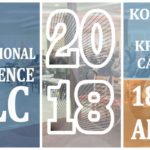

The 8th International Expert Symposium on Accident Research (ESAR) took place with great success in Hannover on 19-20 April 2018. ESAR is organised by the Medical School of Hannover, the University of Technology of Dresden and the Federal Highway Research Institute of Germany and it is a scientific colloquium which can be seen as a platform for exchanges of information on accident research issues. Representatives from authorities as well as from medical and technical institutions came together to discuss new research issues and exchange experiences on accident prevention and methodologies of accident reconstruction. ![]() NTUA actively contributed with the following paper:
NTUA actively contributed with the following paper:

The Department of Highway Engineering of the Gdansk University of Technology and the Foundation for the Development of Civil Engineering in Gdansk organized the 12th International Road Safety Conference GAMBIT 2018, which took place with great success on 12-13 April 2018 at the Gdansk University of Technology. The conference addressed the following areas: Safe road infrastructure, Traffic layout and control for road safety, Vulnerable road users, Human factors in road safety and other road safety problems. ![]()
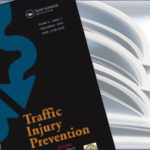
A paper titled “Structural equation model analysis for the evaluation of overall driving performance: A driving simulator study focusing on driver distraction” authored by Panagiotis Papantoniou is now published in Traffic Injury Prevention, Volume 19, 2018 – Issue 3, pp. 317-325. 95 participants from all age groups were asked to drive under different types of distraction (conversation with passenger, cell phone use) in urban and rural road environments with low and high traffic volume in a driving simulator experiment. Then, a structural equation model is developed in which overall driving performance is estimated as a latent variable based on several individual driving simulator measures. The implementation of the structural equation model allows for the assessment of driving behaviour in terms of overall performance and not through individual performance measures, which allows an important scientific step forward from piecemeal analyses to a sound combined analysis of the interrelationship between several risk factors and overall driving performance.. ![]()
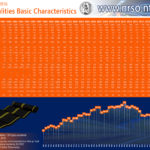
Basic characteristics of road fatalities in Greece for the period 1991-2016 are summarised in a comprehensive Table prepared by the NTUA Road Safety Observatory (data source: ELSTAT). Since 2005, there are approximately 1.000 less road fatalities per year in Greece. According to these time series data a spectacular decrease in road fatalities for young people (70%) and in junctions outside built up areas (72%) is observed during the last decade. On the contrary, fatalities decrease during the last decade is quite limited for cyclists, older drivers, and women drivers. ![]()
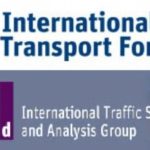
The International Traffic Safety Data and Analysis Group (IRTAD) organised by the International Transport Forum (ITF) a meeting which took place in Paris, on 5-6 April 2018 ![]()
NTUA presentations concerned:

The Department of Methodology in the Behavioural Sciences of the University of Valencia organised the CAMP-sUmp University Campus Sustainable Mobility Conference, co-funded by the European Regional Development Fund of the Interreg MED Programme in Valencia, Spain, on 27 March 2018. Designed to improve sustainable mobility in the Mediterranean area universities’ campus, CAMP-sUmp promotes the advancement of low-carbon strategies and energy efficiency within safe and efficient transport policies. At the CAMP-sUmp Conference the Action Plans and the related Road Maps were presented aiming to support Universities to improve their sustainable mobility plans with emphasis on traffic safety. Presentations were given by the CAMP-sUmp Universities: Catanzaro, Athens, Valencia, Cyprus, Split, Malta and Bologna. ![]()

A Diploma Thesis titled “Development of an Optimization Model of Resource Allocation for the Management of Urban Transport Buses” was presented by Ilias Laios in March 2018, aiming to estimate the optimal allocation of the financial resources of the Athens Urban Transport Organization aiming for the most desirable result of the more efficient replacement of bus fleet. A mathematical optimization model based on the principles of linear integer programming was developed and implemented to achieve the goal. The greatest reduction in the cost of bus fleet management results from favorable conditions for the purchase of innovative and more efficient types of buses, such as electric buses and compressed natural gas buses. ![]()
![]()

The Overseas Development Institute (ODI) launched a publication titled “Securing safe roads: the politics of change” which is an output of the project: The politics of road safety. Over the past 10 years, road safety has been escalated to an issue of international concern. Together with the World Resources Institute Ross Center for Sustainable Cities, ODI undertook research in three middle-income cities: Nairobi, Kenya; Mumbai, India; and Bogotá, Colombia. In this report, ODI synthesizes the findings from these case studies concluding with a series of strategies to improve road safety. ![]()
![]()

POLIS, the European cities and regions network for innovative transport solutions released a discussion paper entitled: “Road Vehicle Automation and Cities and Regions”. Polis promotes the discussion about vehicle automation, focusing on the car as opposed to lorries and buses and on ‘personal mobility’ rather than logistics. The aims of this paper are among others: a) to raise awareness of AV developments and their potential mobility and safety impact among city and regional administrations and to assist them in setting transport policies and plans to deal with them and b) to raise awareness of city and regional transport policies among vehicle manufacturers and other automated vehicle players. ![]()
![]()
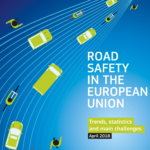
The European Commission has published the preliminary 2017 road safety statistics, which indicate for the second year in a row, a decrease in the number of fatalities of around 2%. While national authorities deliver most of the day-to-day actions, such as enforcement and awareness-raising, the Commission is working on a series of concrete measures to spur further substantial progress. This would be another step towards a “Europe that protects” as envisioned by President Juncker. ![]()
Commissioner for Transport Violeta Bulc said: “25 300 people lost their lives on our roads last year, and many more were left with life-changing injuries. Behind these figures are as many stories of grief and pain. Road safety is of course a responsibility shared with the Member States, but I believe that the EU can do more to better protect Europeans. The ambition is clear: saving more lives on our roads.”
The Road Safety Statistics on EU are included in the recent EU report titled “Trends, Statistics and main challenges” ![]() and are discussed in the European Commission Fact Sheet: 2017 road safety statistics: What is behind the figures?
and are discussed in the European Commission Fact Sheet: 2017 road safety statistics: What is behind the figures? ![]()

A Diploma Thesis titled “Analysis of the impact of autonomous vehicles to travel behaviour” was presented by Panagiotis Papalymperis in March 2018, aiming to analyse the effect of autonomous vehicles on the mobility behaviour as well as to identify the main characteristics that affect this behaviour. For this purpose, data collected from 235 travelers who participated in a stated-preference survey with a questionnaire were analyzed. Through the multinomial and binary regression models developed it appears that time is the parameter with the highest effect on the choice of the mode of transport. Furthermore, respondents expressed an overall positive attitude towards autonomous vehicles, however they were concerned about sharing the vehicle with unknown people, preferring to be alone in an autonomous vehicle ![]()
![]()

The International Conference on Road Safety: A Commitment to the Present and a Challenge for the Future, organized by the World Road Association (PIARC), with Infraestruturas of Portugal (IP) and the Institute of Mobility and Transport (IMT), was held on 19-20 April in Lisbon, Portugal with great success and it brought together international and national experts working on road safety to share experiences and results. It addressed in particular, the Safe Approach System and the Politics of Safety, as well as the role of the infrastructure in safety mobility. ![]()

The 18th international conference Road Safety on Five Continents (RS5C) took place with great success in May 16-18, 2018 on Jeju Island, South Korea. The conference is organised by VTI in close cooperation with Korea Transportation Safety Authority (KOTSA). With focus on traffic safety and health, experts presented and discussed about hot topics and the latest research in the road transport area. By providing a mutual ground for sharing knowledge and a forum to discuss mutual problems and their solutions, researchers, officials and other stakeholders can learn from results, experiences and success stories. ![]()

The International Road Traffic and Accident Group (IRTAD) of the International Transport Forum (ITF/OECD) published recently a new Report “Speed and Crash Risk”, with the active contribution of NTUA. After reviewing the current knowledge on the relationship between speed and crash risk, this report analyses eleven cases from ten countries that have recently changed speed limits or introduced a large-scale automatic speed control. The analysis confirms the very strong relationship between speed and crash risk and that higher speed is associated with increased occurrence and severity of road crashes. ![]()
![]()

The Independent Council for Road Safety International (ICORSI) organised the International Symposium: Road Safety Around the World: Future Concerns, which took place with great success in Paris, France on 18 March 2018. The one day symposium sponsored by ICORSI where fourteen papers were presented to focus on important theoretical and practical issues concerning road safety around the world. The papers have been specially prepared for wider dissemination after discussion at this symposium. ![]()

The SafetyCube European Conference on Better Decision Making for Road Safety took place with great success on 22-23 March 2018, in Vienna. The results of the SafetyCube EC Horizons 2020 research project were presented, with special focus on the European Road Safety Decision Support System (DSS) (www.roadsafety-dss.eu) The SafetyCube DSS is expected to enable policy-makers and stakeholders to select and implement the most appropriate strategies, measures and cost-effective approaches to reduce casualties of all road user types and all severities in Europe and worldwide. ![]()
![]()
 SafetyCube – the European Road Safety Decision Support System
SafetyCube – the European Road Safety Decision Support System Linking road safety risk factors and measures
Linking road safety risk factors and measures The SafetyCube DSS inventory of assessed infrastructure risk factors and measures
The SafetyCube DSS inventory of assessed infrastructure risk factors and measures Road User related risk factors and countermeasures in the European Road Safety DSS
Road User related risk factors and countermeasures in the European Road Safety DSS The safe system approach in evidence-based road safety policy making
The safe system approach in evidence-based road safety policy making Vehicle safety analysis – Risks, Safety measures and accident categories
Vehicle safety analysis – Risks, Safety measures and accident categories
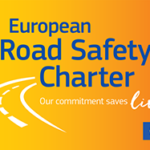
The workshop ‘Together we are road safety’, organised by the European Road Safety Charter and the Road Safety Institute ‘Panos Mylonas’ is going to take place on 21 March 2018 in Athens. The purpose of the workshop is to promote best practices and explore new ideas in relation to awareness and education of young people on road safety issues. ![]()

The European Transport Safety Council (ETSC) has published a Position Paper titled “EU Funds for Road Safety in the Multiannual Financial Framework 2021-2027“. In this paper, ETSC presents recommendations for funding for road safety initiatives within the next long-term EU budget, known as the Multiannual Financial Framework (MFF). These recommendations should support work towards meeting the EU’s current target to reduce road deaths by 50% by 2020 and the new targets for 2030 as well as the long-term Vision Zero. ![]()
![]()
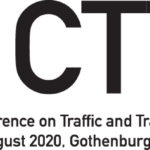
The Swedish National Road and Transport Research Institute (VTI) and the Vehicle and Traffic Safety Centre at Chalmers (SAFER) organised the 7th International Conference on Traffic and Transport Psychology (ICTTP) which was held on August 25-27th 2020 in Gothenburg, Sweden. The Conference philosophy is Taking the Vision Zero Initiative into a New Decade. The Swedish Vision Zero Initiative on road safety is an ethical standpoint that no-one should die or be seriously injured in traffic. The key focus of this conference was on the role that traffic and transport psychology can play in reaching the ethical standpoint that no-one should die or be seriously injured in traffic by providing a common ground for future interdisciplinary research. ![]()
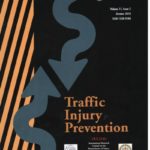
A paper titled “Driving in Mild Cognitive Impairment: the role of depressive symptoms” authored by Ion N. Beratis, Nikos Andronas, Dionysia Kontaxopoulou, Stella Fragkiadaki, Dimosthenis Pavlou, John Papatriantafyllou, Alexandra Economou, George Yannis and Sokratis G. Papageorgiou is now published in Traffic Injury Prevention. Previous studies indicate a negative association between depression and driving fitness in the general population. This paper aimed to cover a gap in the literature and to explore the link between depressive symptoms and driving behavior in individuals with mild cognitive impairment (MCI) through the use of a driving simulator experiment. Results indicated that depressive symptoms could be a factor explaining why certain patients with MCI present altered driving skills. Therefore, interventions for treating the depressive symptoms of individuals with MCI could prove to be beneficial regarding their driving performance. ![]()
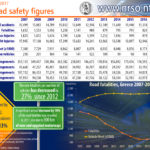
Road fatalities in Greece in 2017 presented a significant decrease (10%) compared to 2016 figures, according to recently published ELSTAT data. This significant decrease could be attributed not only to the fact that Greece is still under economic crisis but also and mainly due to the fact that in the first semester of 2017, more than 500 km on new or upgraded motorways have been opened, replacing national roads with high road fatalities rates. ![]()
During the last decade, Greece presents one of the most significant road safety performances in the European Union, with a decrease of road fatalities of 54% and a decrease of serious injuries of 62%. The rate fatalities per million vehicles has decreased by 59% since 2007.
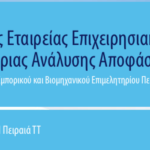
The Greek Operational Research Society (Ε.Ε.Ε.Ε.), the Department of Business and Administration TEI Piraeus and the Piraeus Chamber of Commerce and Industry co-organised the 16th Conference of Operational Research focusing on Multi-Criteria Analysis and Decision Support in Transport, which took place with great success on 15-17 February in Piraeus, Greece. ![]() NTUA actively contributed with two presentations:
NTUA actively contributed with two presentations:

UNECE‘s project “UNDA Road Safety Management Capacity Building Project” aims to assist four countries (Albania, Georgia, the Dominican Republic and Viet Nam) in the ECE, ESCAP and ECLAC regions to address their priority road safety needs by improving their national road safety management systems. The Final Road Safety Performance Review Capacity Building Workshop took place with great success in Kachreti, Georgia, on 15-16 February 2018 and was initiated by policy dialogue with national road safety stakeholders on how to use Road Safety Performance Review recommendations to generate road safety actions. The objective was to provide information and best practice for national government officials and other road safety stakeholders (NGO, academia, private sector) from Albania and Georgia. ![]()

The European Transport Safety Council (ETSC) has published a Position Paper titled “5th EU Road Safety Action Programme 2020-2030”. 2016 was the third consecutive poor year for road safety: 25,670 people lost their lives on EU roads compared to 26,200 the previous year. But this followed a 1% increase in 2015 and stagnation in 2014. In addition, around 135,000 people were seriously injured on European roads in 2014 according to European Commission estimates.
ETSC has identified nine main priorities for action with the top three outlined in the Executive Summary: vulnerable road user safety, automation and reducing the numbers seriously injured on Europe’s roads. A new, EU-level road transport agency could be critically important to planning and delivering new measures as well as providing regulatory oversight of the increasingly complex vehicle type approval that will be required to deal with increased automation. ![]()
![]()

The Civil Engineering School of the National Technical University of Athens was ranked this year 11th in Europe and 42nd worldwide among all Civil Engineering Schools. This ranking is produced by the QS Organisation (QS World University Rankings by Subject 2018) based on the following criteria: Research, Teaching, Employability, Facilities, Internationalization, Innovation, Engagement and Access. NTUA road safety activities have contributed to this ranking. ![]()

The European Transport Safety Council (ETSC) has published a Position Paper titled “Proposed changes to the driving and resting time rules and tachographs”. Amending Regulation (EC) No 561/2006 as regards on minimum requirements on maximum daily and weekly driving times, minimum breaks and daily and weekly rest periods and Regulation (EU) 165/2014 as regards positioning by means of tachographs ETSC welcomes the European Commission’s proposals on driving and resting times and the opportunity they give to improve road safety in the professional transport sector. While ETSC appreciates the rationale behind the proposals, it is crucial that any changes do not compromise the safety of those working in the professional transport sector, and by extension, other people using the road network. ![]()
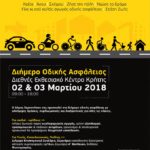
Hersonissos Municipality in Crete with the scientific guidance of the Laboratory of Health and Road Safety (LaHeRS) and of NTUA organized a two-day Road Safety Workshop, titled “Life Road” which took place with great success on 2-3 March, 2018. Key national and local decision makers, stakeholders and experts worked on an holistic approach on road behaviour and culture, with several parallel road safety campaigns and activities. ![]() NTUA presentations concerned:
NTUA presentations concerned:
 Τhe NTUA Road Safety Observatory
Τhe NTUA Road Safety Observatory Hellenic Institute of Transportation Engineers Position on Road Safety
Hellenic Institute of Transportation Engineers Position on Road Safety

The European Transport Safety Council (ETSC) has published the 34th PIN Flash Report “New EU vehicle safety standards essential to reducing child road deaths“, with the active contribution of NTUA. More than 8,000 children aged 0-14 years have been killed in road traffic collisions over the last ten years in the European Union, new data show. Half of the children killed were travelling in cars, a third were walking and 13% were cycling. ETSC says that measures that can reduce speeding are critical to preventing the deaths of more children and is calling for the EU to require vehicle safety technologies such as Intelligent Speed Assistance (ISA) and Automated Emergency Braking (AEB) that can detect pedestrians and cyclists to be fitted as standard on all new cars. ![]()

Jean Todt, United Nations Secretary-General’s Special Envoy for Road Safety stated that: SafeFITS provides a tool to help Member States review their current road safety situation and priorities, assisting them to determine the most appropriate and beneficial policy options for their national context, under the framework of the Decade of Action for Road Safety.














































































































































































